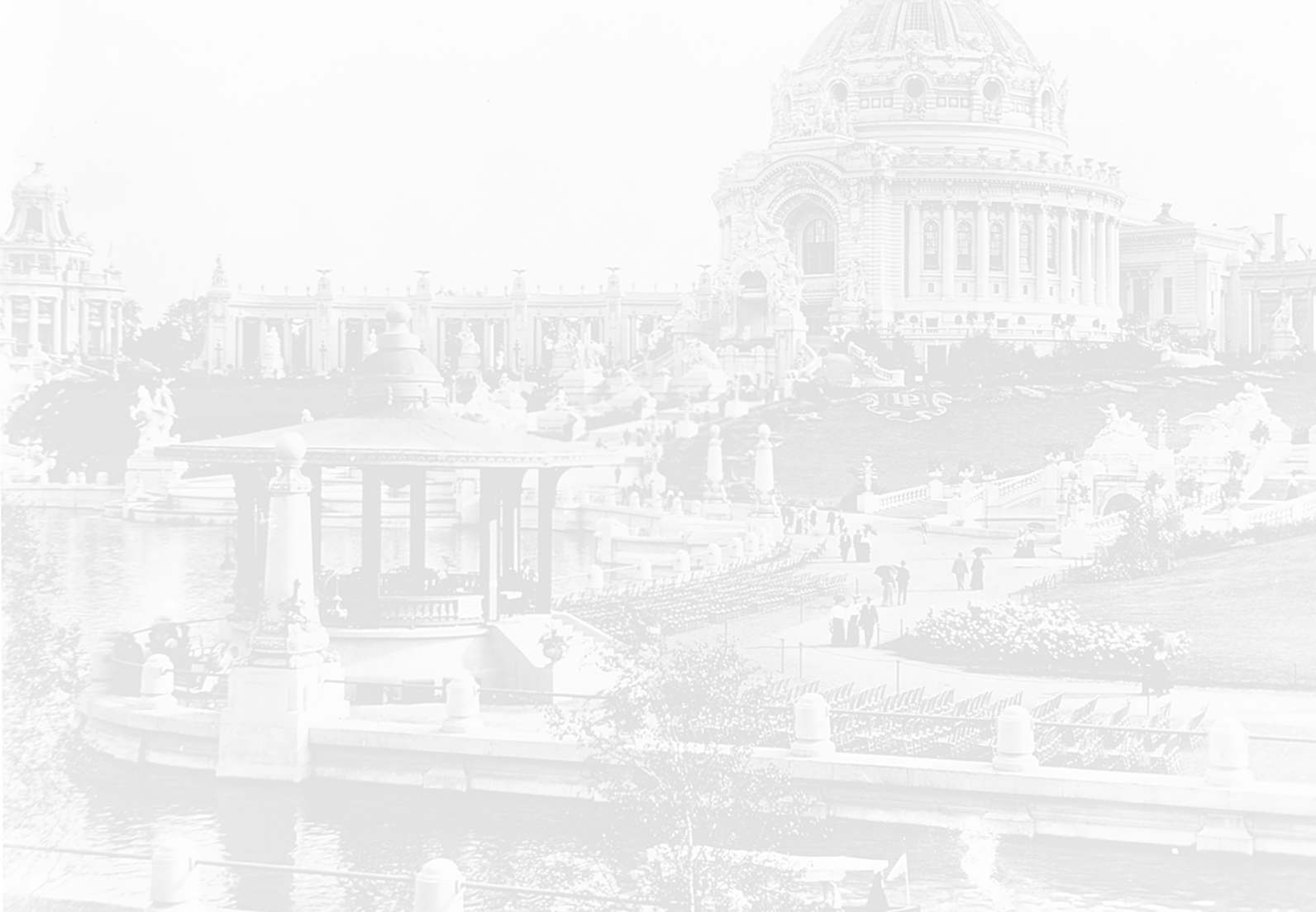Alabama made no appropriation from its treasury for an official building at the Louisiana Purchase Exposition in 1904. Taxes could not allow the city of Birmingham to raise the capitol, so the Chamber of Commerce decided they were going to send a statue of Vulcan.* With a break on the enormous transportation costs, and contributions from all over the state, the people (supported by the newspapers raised the funds for the statue.
Commissioned artist, Italian Giseppe Morretti, designed and created the statue, which was displayed near the south entrance of the Palace of Mines and Metallurgy.
The massive 120,000 pound statue was one of the more interesting and striking objects in the entire Exposition.
Beneath the Vulcan statue, in the Palace of the Mines, a visitor could see an exhibit of Alabama's raw products such as: brown hematite iron ore, soft red ore, hard red ore,bituminous coals, building stone, gray iron, limestone, dolomite, kaolin, clays, cement rocks, gold ores, copper ore, lignite, and glass sand. Iron and coal from the Birmingham district was also featured.
Also one could see a display of Alabama marble made in the form of a head of Christ, which was carved by Moretti, while he was at work on the Vulcan statue
at Birmingham.
An exhibit of porcelain clays and kaolins (white clayey rock- sometimes called China or Paper Clay), showcased Alabama's future on the manufacture of all kinds of crockery and pottery.
Glass, Portland cement productions, as well as marble deposits, gold and copper ores, and other mineral deposits were sufficiently exhibited.
* See the Vulcan page in the Misc. section of this web site.




